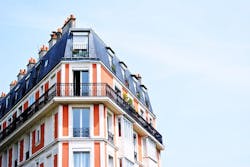Passive house standard becoming increasingly popular for multifamily housing development
Multifamily projects under construction or that have recently come online indicate a trend toward high-efficiency in this sector of the housing market.
Some of these projects are targeted for the luxury market; others are aimed at the affordable end of the spectrum. Low-income residents, in particular, can realize significant benefits from passive house construction.
In urban areas, those of modest means often have higher rates of asthma and other forms of lung disease. Many of their apartments lack filtered ventilation and cooling, leaving them exposed to car exhaust and other forms of air pollution as they open windows during hot weather.
Higher efficiency structures result in significant savings on energy costs. In one New York passive house multifamily project that uses a geothermal heating and cooling system, tenants pay about $10 a month, at most, for cooling. By contrast, residents in other buildings in New York can pay $100 or more per month for cooling.
Large passive house projects can offer energy savings for buildings owners of 75% to 80% in some cases.
